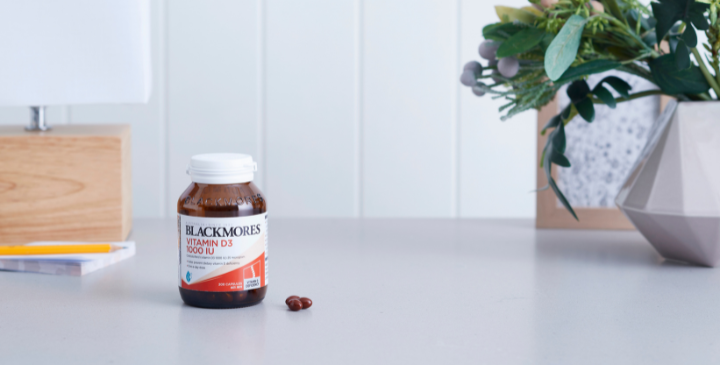
- Health hub/
- Tips & Advice on Cold, Flu & Boosting Immunity/
- 5 ways to get more Vitamin D


Vitamin D might be one of the 13 vitamins that are essential for good health and wellbeing, but as many as one in three Australians are vitamin D deficient .Causing symptoms like fatigue, muscle weakness, aches and cramps, and even mood changes, some people are more at risk of having vitamin D levels that are too low than others.
For example, you may have a higher risk if you:
So, how do you get vitamin D? Here are five ways to keep your levels topped up.
1. Get some sunshine.The best natural source of vitamin D is sun exposure, thanks to the way ultraviolet radiation (UV) triggers the production of the vitamin in the skin. The amount of UV exposure you need in order to get enough vitamin D depends on a few different things, including the time of year, the UV levels and your skin type. As a general rule though, it’s important to use sun protection whenever the UV level is 3 or above to protect your skin.
And remember – on top of the fact that you’re unlikely to risk vitamin D deficiency by using sun protection, your body can only absorb a limited amount of vitamin D at a time. That means spending too much time in the sun on any one day won’t help to increase your vitamin D levels, but may increase your risk of experiencing sun-related skin damage.
2. Eat naturally vitamin-D-rich foods. Dietary sources of vitamin D include fatty fish - like salmon - liver, meat and eggs. Mushrooms also naturally contain small amounts of vitamin D, and placing a handful of store-bought ones in direct sunlight for 10-15 minutes can significantly bump up their vitamin D content.
3. Choose foods that are fortified with vitamin D. Margarine, some commercial fruit juices and dairy and plant-based milks often contain added vitamin D.
4. Do some regular physical activity. Research shows that exercise can help to assist with the body’s production of vitamin D. To benefit, it doesn’t matter whether you get active outdoors or inside, but by heading outside to exercise, you might get more bang for your buck – physical activity and some sun exposure.
5. Consider taking a vitamin D supplement. For people who are deficient in vitamin D, taking a supplement as directed can help increase levels of vitamin D. If you think you may be at risk of vitamin D deficiency, or you’re worried that you are deficient, ask your GP for their advice.






